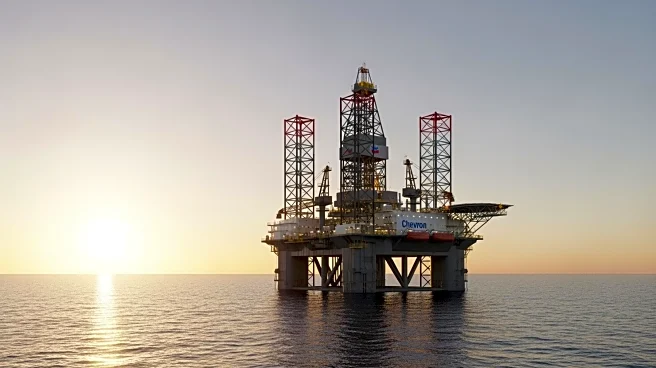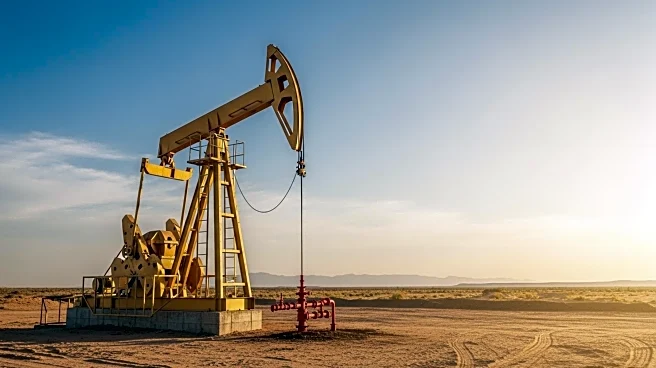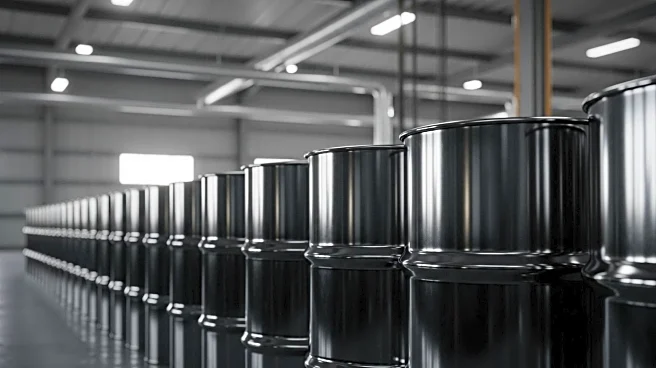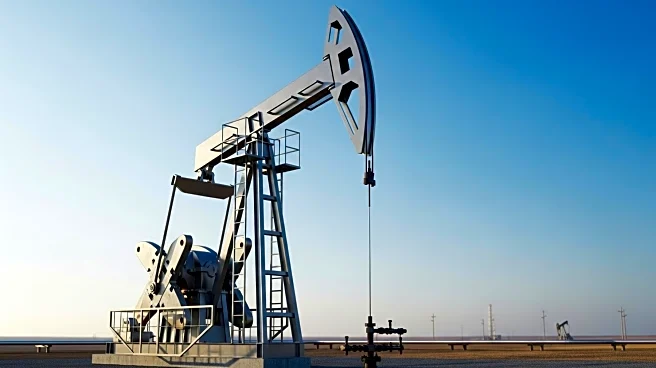What's Happening?
Chevron is increasing its offshore drilling activities in the Gulf of Mexico, leveraging advanced high-pressure drilling technology to access previously unreachable resources. This move comes as onshore production faces challenges due to lower oil prices
and maturing shale fields. Chevron's production in the Gulf is expected to reach 300,000 barrels of oil equivalent per day by 2026, marking a 50% increase over two years. The company highlights that offshore production offers high-margin barrels and is supported by industry-friendly regulations under President Trump's administration.
Why It's Important?
The shift towards offshore drilling is significant for the U.S. oil industry as it seeks to maintain production levels amidst declining onshore output. Offshore production, which accounts for about 15% of total U.S. output, is poised to drive growth due to technological advancements and regulatory support. This transition could impact U.S. energy policy, economic stability, and global oil market dynamics. Companies like Chevron and Talos Energy are investing in offshore projects, which may offer lower break-even prices compared to onshore drilling, potentially benefiting the U.S. economy and energy independence.
What's Next?
The U.S. government plans to hold a sale of oil and gas drilling rights in the Gulf of Mexico, aiming to boost industry participation with lower deepwater royalty rates. This could further encourage offshore drilling investments. Additionally, President Trump's administration has proposed legislation to increase offshore lease sales, potentially enhancing long-term production capabilities. Companies are expected to continue exploring high-pressure drilling technologies to unlock more deepwater reserves, which could lead to increased production and economic benefits.
Beyond the Headlines
The expansion of offshore drilling raises environmental and regulatory concerns, as increased activity in the Gulf of Mexico could impact marine ecosystems. The reliance on fossil fuels also poses challenges to climate change mitigation efforts. However, the technological advancements in drilling may set new industry standards, influencing global energy strategies and potentially leading to more sustainable practices in the future.













